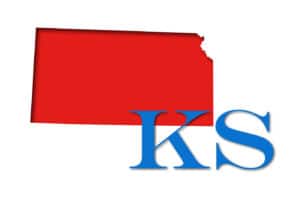Freddie Mac Multifamily is encouraging energy efficiency and affordability in apartment properties and strengthening the market for green investments by offering a Green Rebate to borrowers on qualified property loans who voluntarily provide an ENERGY STAR® score with their loan documents. Offered by the U.S. Environmental Protection Agency (EPA), the ENERGY STAR Score is a simple indicator of the energy performance of a multifamily property compared to its peers from across the country.
“We are doing more than just saying energy efficiency is smart for businesses, their customers and the environment,” said Mitchell Resnick, vice president of capital markets for Freddie Mac Multifamily. “As one of the largest funders of multifamily properties in the nation, we are offering monetary incentives to boost awareness regarding energy consumption because it creates efficiency through lower utility costs, makes properties a better investment and more affordable for renters.”
Rental housing is home to a majority of the nation’s lower income households who work hard and are struggling with housing costs such as rent and utilities.
“Energy efficiency provides one of the greatest opportunities to reduce the environmental impact of multifamily housing, while at the same time making that housing more affordable,” said Michael Zatz, manager of the EPA’s ENERGY STAR Commercial Buildings Program. “The EPA commends Freddie Mac for recognizing the value of energy benchmarking as the first step to improving energy performance, and looks forward to working with Freddie Mac and its borrowers as they strive to reduce energy use at their properties.”
Freddie Mac also plans to eventually report the ENERGY STAR scores in its K-Deal multifamily mortgage-backed securities and is encouraging industry adoption of the tool.
The ENERGY STAR Score is available in the EPA’s Portfolio Manager® tool, a free online software platform that allows commercial building owners and managers to benchmark and track energy and water usage as well as greenhouse gas emissions. More than a dozen cities and counties across the country, including New York, Chicago, Boston, San Francisco and Washington, DC, require energy tracking and reporting using Portfolio Manager.
“Investors understand that energy efficiency can have a positive impact on a property’s profitability, marketability, stability and market value, and some have even earmarked money for green investments,” Resnick added. “A 10 percent decrease in energy use can result in a 1.5 percent increase in net operating income for a multifamily property.”
Facts:
- The EPA estimates that the average commercial building wastes 30 percent of the energy it consumes, often resulting in higher operating costs.
- If a 400,000 square-foot building pays $1 per square foot in energy costs, then cutting its consumption by 10 percent adds $40,000 to its net operating income, and could boost the property’s value by $800,000 assuming a 5 percent cap rate.
- The EPA’s Portfolio Manager tool is the industry standard for energy, water, and greenhouse gas benchmarking, with over 400,000 properties representing more than 35 billion square feet of space using the tool. More information on Portfolio Manager can be found at www.energystar.gov/benchmark and information on the ENERGY STAR Program for multifamily properties can be found at www.energystar.gov/multifamily
Additional Details:
- Term Sheet for Freddie Mac Green Rebate for apartments with 20 or more units
- Blog by Mitchell Resnick: Our New Green Rebate Offering — Go Green and Save in More Ways Than One
- It’s Not Easy Being Green…Or is It: an article by Freddie Mac in the Winter 2015 issue of CRE Finance World
About Freddie Mac
Freddie Mac was established by Congress in 1970 to provide liquidity, stability and affordability to the nation’s residential mortgage markets. Freddie Mac supports homeowners and renters nationwide by providing mortgage capital to lenders. Today Freddie Mac is making home possible for approximately one in four home borrowers and is one of the largest sources of financing for multifamily housing. Additional information is available at FreddieMac.com , Twitter @FreddieMac and Freddie Mac’s blog FreddieMac.com/blog.



